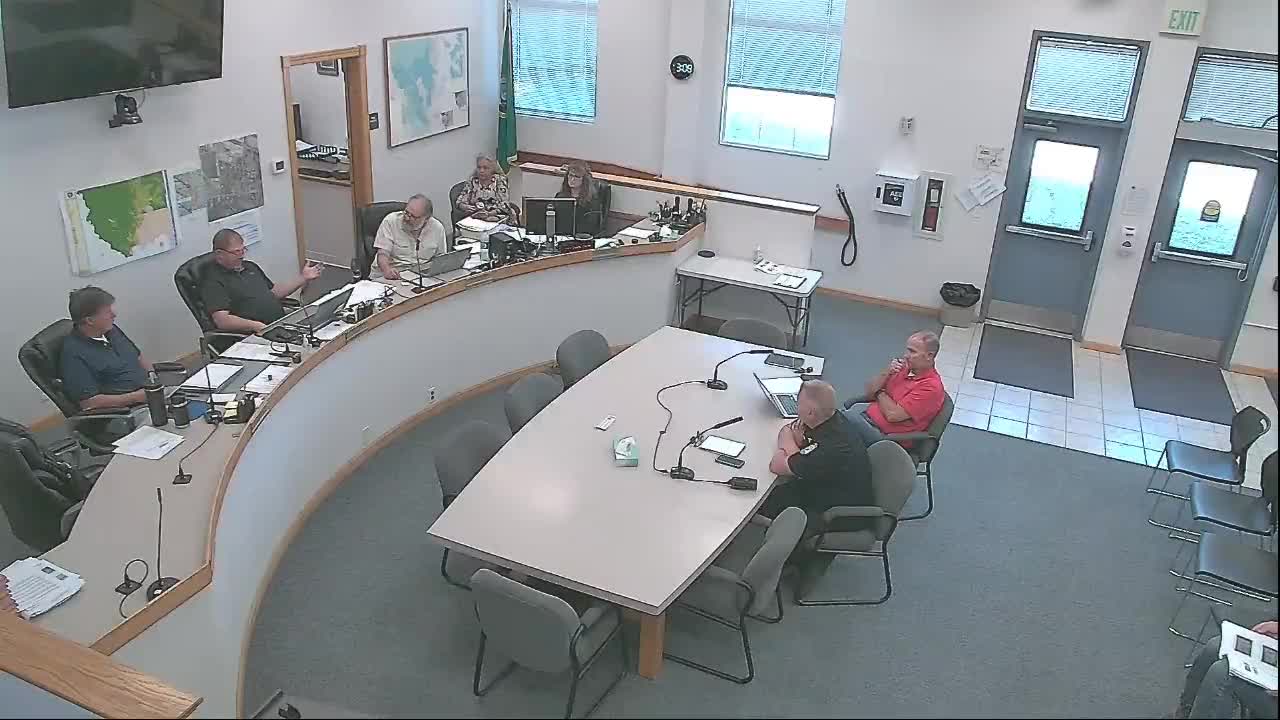Rural EMS Faces Funding Crisis Amidst Budget Challenges
August 27, 2024 | Okanogan County, Washington
This article was created by AI summarizing key points discussed. AI makes mistakes, so for full details and context, please refer to the video of the full meeting. Please report any errors so we can fix them. Report an error »

In a recent government meeting, officials discussed critical issues surrounding emergency medical services (EMS) funding and operational challenges, particularly in rural areas. The conversation highlighted the significant disparity in funding mechanisms between EMS and fire services, with rural EMS often receiving only 50% of the necessary funding for transport services. This funding gap has persisted for years, exacerbated by outdated assessment practices that fail to reflect the true costs of providing these essential services.
Participants noted that while larger cities typically have more robust EMS support through fire service taxes and levies, rural districts struggle with limited financial resources. The maximum allowable levy for EMS is capped at 50 cents per $1,000 of assessed value, a figure that has not been reassessed in a long time, leaving rural areas at a disadvantage.
The discussion also touched on the complexities of inter-district cooperation and the need for a unified approach to address the challenges faced by EMS providers. Officials emphasized the importance of collaboration among various districts to create a comprehensive plan that considers the impact of individual interests on the overall service delivery.
Budgetary concerns were a focal point, with officials reviewing projected revenues and expenses for the upcoming fiscal year. The budget included a significant allocation for dispatch services, which is critical for coordinating emergency responses. However, there were concerns about the sustainability of these services, especially if levies fail or expire, which could lead to contract modifications or terminations.
Additionally, the meeting addressed infrastructure issues, including ongoing plumbing problems and a leaking roof at the EMS facility, which further complicate operational efficiency. The need for improved facilities was underscored, particularly as the Department of Natural Resources (DNR) seeks better accommodations for its equipment.
Overall, the meeting underscored the urgent need for a reevaluation of funding structures and collaborative strategies to enhance EMS services in rural communities, ensuring that they can effectively meet the needs of their populations.
Participants noted that while larger cities typically have more robust EMS support through fire service taxes and levies, rural districts struggle with limited financial resources. The maximum allowable levy for EMS is capped at 50 cents per $1,000 of assessed value, a figure that has not been reassessed in a long time, leaving rural areas at a disadvantage.
The discussion also touched on the complexities of inter-district cooperation and the need for a unified approach to address the challenges faced by EMS providers. Officials emphasized the importance of collaboration among various districts to create a comprehensive plan that considers the impact of individual interests on the overall service delivery.
Budgetary concerns were a focal point, with officials reviewing projected revenues and expenses for the upcoming fiscal year. The budget included a significant allocation for dispatch services, which is critical for coordinating emergency responses. However, there were concerns about the sustainability of these services, especially if levies fail or expire, which could lead to contract modifications or terminations.
Additionally, the meeting addressed infrastructure issues, including ongoing plumbing problems and a leaking roof at the EMS facility, which further complicate operational efficiency. The need for improved facilities was underscored, particularly as the Department of Natural Resources (DNR) seeks better accommodations for its equipment.
Overall, the meeting underscored the urgent need for a reevaluation of funding structures and collaborative strategies to enhance EMS services in rural communities, ensuring that they can effectively meet the needs of their populations.
View full meeting
This article is based on a recent meeting—watch the full video and explore the complete transcript for deeper insights into the discussion.
View full meeting
